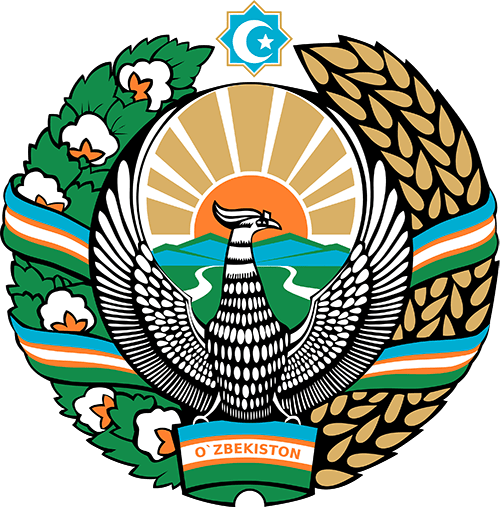ДЕТЕРМИНАНТЫ АУТОДЕСТРУКТИВНЫХ ТЕНДЕНЦИЙ В ПОДРОСТКОВОМ ВОЗРАСТЕ
Б.О.Мухторов, Ташкентский педиатрический медицинский институт
В.К.Абдуллаева, Ташкентский педиатрический медицинский институт
А.А.Ганиханов Ташкентский педиатрический медицинский институт
Резюме
В статье представлены литературные данные и анализ собственных исследований по выявлению предикторов формирования аутодеструктивных тенденций в подростковом возрасте. Причинами самоповреждающего поведения этих подростков являются способ избавления от напряжения и восстановление контроля над эмоциями. Данные стратегии выступают для них в качестве способов самоконтроля: успокоиться, взять себя в руки, справиться с собственными эмоциями в ситуациях, когда окружающий мир вызывает раздражение и злость.
Ключевые слова: подростки, аутодеструктивные тенденции, самоповреждающее поведение
Первая страница
111
Последняя страница
115
Для цитирования
Б.О.Мухторов, В.К.Абдуллаева, А.А.Ганиханов ДЕТЕРМИНАНТЫ АУТОДЕСТРУКТИВНЫХ ТЕНДЕНЦИЙ В ПОДРОСТКОВОМ ВОЗРАСТЕ // Евразийский вестник педиатрии. — 2022; 4 (15):111-115 https://clck.ru/333gAN
Литература
- 1. Abdullaeva V.K., Abbasova D.S. et al. Predict depressive disorders at the earliest stages of its formation in adolescent’s //Annali d/Italia (2020) VOL 1, No 7; pp 15-18.
- 2. Abdullaeva V.K., Babarakhimova S.B. Analisys of psychosocial factors in development of suicidal tendencies at adolescent’s //Central Asian Journal оf Pediatrics 2 (1), 201-204, 2019.
- 3. Berkson G. Early Development of Stereotyped and Self-Injurious Behaviors / G. Berkson, M. Tupa //Journal of Early Intervention. – 2000. – Vol. 23. – P. 1-19.
- 4. Brunner R., Kaess M., Parzer P., Fischer G., Carli V., Hoven CW., et al. Lifetime prevalence and psychosocial correlates of adolescent direct self-injurious behavior: A comparative study of findings in 11 European countries. //Journal of Child Psychology and Psychiatry. 2013;55(4):337-348.
- 5. Gandhi A., Luyckx K., Baetens I., Kiekens G., Sleuwaegen E., Berens A., et al. Age of onset of non-suicidal self-injury in Dutch-speaking adolescents and emerging adults: An event history analysis of pooled data. //Comprehensive Psychiatry. 2018; 80: 170-178.
- 6. Giletta M., Scholte R.H.J, Engels R.C.M.E., Ciairano S., Prinstein M.J. Adolescent non-suicidal self-injury: A cross-national study of community samples from Italy, the Netherlands and the United States. Psychiatry Research. 2012; 197(1-2):66-72.
- 7. Gutierrez P.M. Development and initial validation of the self-harm behavior questionnaire / P.M. Gutierrez, A. Osman, F.X. Barrios, B.A. Kopper //Journal of Personality Assessment. – 2001. – Vol. 77. – P. 475-490.
- 8. Matveeva A.A., Sultonova K.B., Abbasova D.S. et al. Optimization of psychodiagnostics of emotional states //Danish Scientific Journal. VOL 3, № 5 — pp. 24-27.
- 9. Muehlenkamp J.J., Claes L., Havertape L., Plener P.L. International prevalence of adolescent non-suicidal self-injury and deliberate self-harm. Child and Adolescent Psychiatry and Mental Health. 2012; 6(1):10.
- 10. Nurkhodjaev S., Babarakhimova S., Abdullaeva V. Early Detection and Prevention of Suicidal Behavior in Adolescents – Indian Jornal of Forensic medicine & Toxicology. VOL 14, № 3(2020) — pp.7258-7263.
- 11. Swannell S.V., Martin G.E., Page A., Hasking P., St John N.J. Prevalence of Nonsuicidal Self-Injury in Nonclinical Samples: Systematic Review, Meta-Analysis and Meta-Regression. Suicide and Life-Threatening Behavior. 2014; 44 (3): 273-303.
- 12. Thompson T., Caruso M. Self-Injury: What We’re Looking For. Schroeder SR, Osterker ML, Thompson Travis (eds). Self-Injurious Behavior: GeneBrain-Behavior Relationships. Washington, DC: American Psychological Association 2002. – pp. 147-162.
- 13. Victor S.E., Styer D., Washburn J.J. Characteristics of nonsuicidal self-injury associated with suicidal ideation: evidence from a clinical sample of youth. Child and Adolescent Psychiatry and Mental Health. 2015; 9(1).
- 14. Zetterqvist M., Lundh L.G., Dahlström Ö., Svedin C.G. Prevalence and Function of Non-Suicidal Self-Injury (NSSI) in a Community Sample of Adolescents, Using Suggested DSM-5 Criteria for a Potential NSSI Disorder. //Journal of Abnormal Child Psychology. 2013; 41(5):759-773.
Статья доступна ниже:



